VoltBike is an online-only electric bike company based out of Burnaby Canada. They recently expanded to a shipping depot in Northern Washington to serve both markets more effectively, and to me, that’s a sign that the business is going well. I’ve reviewed a handful of their products over the years and the speed and quality of shipping have always impressed me. Not just because the bikes arrived in Texas, Colorado, and even Cabo San Lucas Mexico unscathed… but because they only charge a flat rate $70 for the US and $50 for Canada. Sometimes, it can feel like you’re getting a sweet deal on a product based on the sticker price and then you get hit with a bunch of additional fees during checkout… that’s not the case here. The Enduro expands on VoltBike’s off-road line of models which includes a fat tire ebike, a folding fat tire model, and a hardtail trail bike. It’s their first e-bike with full suspension and a mid-drive motor. This is a great combination because suspended wheels can move quicker and respond more effectively to bumpy terrain if they weigh less. They call this “unsprung weight” and it’s an important factor in the design of race cars. While the Enduro is more of a sporty looking product than a premium precision-build, it performed quite well during my off-road mountain test. I climbed, descended quickly over large rocks, hopped the bike off a few bumps, and did an on-road speed test. It’s only available in one frame size with matte-black paint for now, but the black motor, battery, and wires blend in nicely. For me, as a 5’9″ tall guy, the stem was a bit long and the seat post was too short. I adjusted the brake lever position on both sides, raised the seat post to its maximum recommended height, and slid the saddle forward to shorten reach before going out. Compared to many other order-by-mail electric bicycles, this one was easy to setup. The wheels are both attached and only the handlebar needs to be added using four bolts. VoltBike sends a small tool pouch but I only used two of the five Allen key hex wrenches, and one began to strip before everything was done. I switched to my higher-quality tools and used a bit of grease and chain lube to finish the job. The only thing you absolutely need to get this bike going is a Schrader compatible bicycle pump. It ships with lower-end Kenda Small Block Eight tires rated for 40 to 65 PSI, which is higher than most of the mountain tires I see. Higher pressure will reduce drag while sacrificing traction and smoothness. I filled them to 40 PSI because I’m not especially heavy at ~135 lbs and wanted the best traction possible for the mountain trail test. Other areas that seem a little less mountain oriented include the integrated headlight, kickstand, and ergonomic grips. I appreciate each of these features… they chose the parts well, but I think they’re most useful in an urban setting. Given the lack of bottle cage bosses, rear rack attachment, and even fender mounts, this is a bike that feels great riding around town but lacks utility. I’m trying to show the trade-offs you get with this product but honestly, it would be my first choice in the VoltBike lineup right now because I value comfort over utility, don’t mind wearing a small backpack to carry gear to work, and appreciate the efficiency and durability of the Bafang Max Drive motor vs. a hub motor.
Driving the bike is a 350 watt nominally rated mid-drive with peak torque output of 80 Newton-meters. The numbers put it in the same performance range as Bosch, Brose, Yamaha and Impulse which cost much more. It’s fairly compact, but not as good looking as the new Bosch tilted designs, and it’s one of the quietest offerings around. The areas it doesn’t stand out so much are zippiness and RPM output. Basically, you need to switch gears more actively while pedaling to accelerate quickly and ultimately reach higher top speeds. In these ways, it reminds me of the base level Yamaha mid-drive. For the price, it’s a big jump up from geared hub motors (used on all of the other VoltBikes at the time of this review) and it got me up 12% grades on a rocky dirt trail in Colorado without any issues. Of course, my speed hovered around 8 mph during these stretches… but that’s because I remained seated and focused on balance and handling vs. speed. Interestingly, the Volt Bike Enduro arrived with a maximum speed setting of 25 km/h which is roughly 15.5 mph. This is below the legal limit in the United States and Canada so I unlocked the display panel by pressing the i button twice quickly then used the password 0, 5, 1, 2 to raise the limit to 32 km/h. This made it a Class 1 trail-legal electric bike… but later on, I raised it further to 60 km/h (which it doesn’t actually hit) to get an effective speed of ~28 mph. Basically, this can be a Class 1 or Class 3 speed pedelec which makes it a contender for urban commuting if you ride on street bike lanes.
In order to climb with a 55.7 lb ebike like this, go fast, and go far, you need a good sized battery pack. The Enduro comes with a 48 volt 10.4 amp hour battery that uses Sanyo lithium-ion cells. Apparently, Panasonic purchased Sanyo in recent years and VoltBike stresses this in their marketing collateral. Panasonic is known as the top-level battery producer in the ebike space and commands a premium. I can’t say much about longevity because I only tested the bike for a few days… but Lithium-ion cells tend to hold up well over time and VoltBike offers a comprehensive one year warranty. For the price of the bike, this battery pack seems like a great deal and I love that they mounted it tighter than the older Yukon models which seemed to rattle a bit. The pack can be charged on or off the bike for convenience, I tend to remove the pack for safe storage in a cool dry location vs. leaving it on the bike at all times and it’s easy to lift because it has a little flip-out handle on the side. Plugging the pack in is easy, it uses the same port whether it’s on or off the frame and the charger is compact and very lightweight at just 1.1 lbs. My only complaint here is that the rubber cover that protects the female plug on the left side of the battery can be difficult to push in. For this reason, I regularly see people riding with the rubber cover left dangling off and this could lead to dust and water damage over time. On the opposite side, the top right corner of the pack, there’s a second rubber cover protecting a standard sized 5 Volt 2 Amp USB port. You could use this to charge a phone, music player, or additional lights but do be careful when pedaling… consider a right-angle adapter to reduce exposure to kicks and snags. Final thoughts on the battery after riding down the mountain at higher speed is that it still wobbles a bit (though the chain bounces a whole lot… so good thing it has a thick slap guard), the weight is positioned well and it wasn’t as flashy as some other packs that aren’t so integrated.
The display panel used to gauge performance and change electric assist handling is from Bafang and I believe it’s the DPC10 or some variation. I found a great resource for Bafang / 8Fun displays here and learned how to adjust settings and clear the trip meter. I like that the display feels solidly mounted but still swivels to reduce glare. It comes with one of the larger button pads with a key for lights and information as well as power, plus and minus. Compared to the Bosch button pad, this one isn’t as physically intuitive and might require a glance down. On two occasions, I pressed the information key and had it stick down because it sort of angled sideways. While it is easy to reach, fairly compact, and appears to be water resistant, it just feels a little bit cheaper and the wire running back to the display seemed short. It kept bumping into the bell and muting it. When it arrived, this cable was actually zip tied to the left brake lever motor inhibitor which allowed the bell to work perfectly, but as I adjusted the brake levers it became too tight. I’d rather have a comfortable hand position than a functional bell but maybe future versions will ship with a slightly longer cable and this won’t be an issue? One other cable seemed too short and that was a pretty important one… the shifter cable leading back to the eight-speed Shimano Acera derailleur. When I shifted to the lowest gear (the largest sprocket) the cable seemed very tight. I didn’t have a problem, but this is another area to be careful with and possibly adjust if there’s extra length up front. VoltBike has been very proactive and responsive based on my past reviews and while I believe all of their bikes are produced overseas, they seem to be doing well enough to make incremental improvements and provide feedback that isn’t just ignored by the factory. The truth is, you’re getting a lot of value here for $1,800 and a little bit of attention during assembly can go a long way. I highly recommend having a shop give it a full tuneup for ~$80 if you can. This will make it ride better and last longer because the wheels will be trued, the derailleur will shift properly and they may add grease to the pedals as I did, to reduce creaking.
I got a little off track there talking about assembly and maintenance so let’s jump back into the display. This thing has a light sensor, adjustable backlighting, a 10-bar battery infographic for precise feedback on range (though no range estimation feature). You can change the units from kilometers to miles by doing the double tap i-i trick mentioned earlier and this works without the password. I’m not sure if VoltBike intended this but the handlebar is a low-rise with enough bend to help protect the display in the event of a crash. And while it’s not removable, you can park the bike with your helmet covering the display as a way to decrease attention, reduce sun exposure, and protect from water without causing condensation. This ebike, as with most, should be highly water resistant… but don’t submerge it. Perhaps the biggest difference between the Enduro and other VoltBike models is the lack of a throttle. You have to pedal in order to get the motor going but it uses a combination cadence-torque sensor which is very responsive and fluid. You will definitely get increased range from a system like this and it’s permissible on more trails than throttle-operated products. I think instant-power can be harmful to some mid-drive systems and really stress the chain, sprockets, and derailleur if used improperly. This motor controller does not have a shift sensor and thus, you can grind the gears and cause mashing to occur if you shift hard. I tend to ease off when pedaling for a moment and then shift. When climbing, this means that I build up some speed and momentum before shifting and try to plan ahead. Worst case, it’s better to stop and push the bike than wreck the drivetrain. And by wreck, I mean break the chain or bend the teeth on the cassette sprockets. You get a lower-end eight-speed Shimano Acera with the Enduro that probably doesn’t belong on a true mountain bike. I found that the range was large enough to climb and top 20 mph comfortably but it’s just not as tight or durable as the Deore, SLX, and Deore XT Shadow Plus that I see on higher-end products. The chainring has a nice bash guard/guide metal plate that should reduce snags, impacts and chain drops. Some ebikes have a true guide with two metal plates but I didn’t experience a chain drop while riding so perhaps this is good enough.
I had a blast assembling, testing, and optimizing the VoltBike Enduro electric bike. It’s a product I wish had existed when I purchased my first ebike many years ago. Instead, I ended up with the Evelo Aries, a cool looking full suspension product that’s exciting on paper and in photos but actually has a flexy frame, very limited motor operation, a stiff non-adjustable rear suspension, and difficult battery position. It produced a lot of noise and weighed ten pounds more than the Enduro and the purchase felt like a total waste. I felt terrible at the time but appreciated how responsive and supportive the company was. That bike is a big part of why I created this website. Not everyone can afford or wants a high-end electric bicycle… but there are many trade-offs to consider at the mid and lower levels. While the VoltBike Endure may not be a perfect fit for trails or the city, it looks cool, improves comfort over hardtail models, performs quite well and blends in. Note that you may need a special pump to adjust the rear air suspension properly and that it doesn’t have markings to help you adjust it by weight… but I pumped it up to ~140 PSI and saw it perform adequately on the trail. Big thanks to VoltBike for partnering with me on this post. I did receive a service fee for the processing and editing work performed (as I do with many reviews these days) but did not get a free bike or receive a larger sum than I do from other brands. I made a longer video because I was truly interested in seeing how the bike would perform and perhaps because I wanted to help my former self. The guy who was commuting to work by bike in Austin, Texas and just wanted something a little more fun than a city style ebike :)
Pros:
- The price is pretty incredible… despite some lower end components like the eight-speed Acera drivetrain (two steps up from the base Tourney) and mechanical 160 mm disc brakes vs.
hydraulic, it handled the trail - Even though most electric mountain bikes don’t have integrated lights, I appreciate that this one does because I’d probably use it for a mix of urban and trail riding, the light is compact and didn’t rattle on the trail, it also shines from the sides a bit to increase your profile
- Stiff solid frame with good weight distribution, the mid-drive motor and downtube integrated battery pack are positioned very well
- Removable battery shaves 7 lbs off the weight of the bike, both wheels offer quick release for easy maintenance or compact transport and storage
- The display is large, easy to read, swivels to reduce glare, and offers a lot of adjustment options like backlight brightness, auto off, and wheel size
- This is one of the few electric bikes that allows you to adjust the top speed, mine arrived set to 25 km/h which is ~15.5 mph, if you press the i button two times quickly, it enters the menu where you can cycle through to password (use 0, 5, 1, 2) and then change the max speed to 32 km/h for 20 mph or up to 60 km/h for close to 28 mph top assisted speed (of course, you can also go slower than 25 km/h if you’d like)
- Shipping was very inexpensive at $70 and the bike arrived in great shape, they put styrofoam on both sides of the box as well as the front and back, they also bubble wrap the frame and sensitive hardware like the light, display, and battery
- For someone who wants a bit of comfort but only plans to ride in the city, the ergonomic grips, larger knobby tires, and basic suspension feels pretty great, it would perform better in snow and going over bumpy roads than a hardtail or city bike
- The battery locks securely to the frame and felt tighter than some of the older VoltBike models (I’m told they have all been tightened so they won’t rattle), you can click the battery onto the frame without the key
- It’s nice to have access to USB power to charge your phone, GPS, music player, or additional lights, consider grabbing a right angle USB adapter to keep your plugs out of the way
Cons:
- The suspension isn’t especially smooth or long travel, you’ll probably need a special shock pump to adjust the pressure on the rear air suspension, I used this Izende mini-pump that works for Schrader and Presta valves, is light, small, and has a pressure gauge built in
- Disc brakes are perfect for trail and mountain riding but 160 mm is kind of small and mechanical requires more hand strength than hydraulic, they also don’t have adjustable reach levers
- The stem seems a little long, I felt like I was very stretched out horizontally and a bit squished vertically because of the short 200 mm seat post, consider replacing it with a 30.4 mm diameter 350 mm length post like this, you can always use a hack saw to shorten it if needed but make sure to have enough post in the tube to provide strength
- There was nowhere to mount a rear rack or bottle cage bosses but that’s not abnormal for low and mid-level full suspension ebikes due to battery placement, you may be able to add fenders… if you need a rack, consider a beam rack like this or the Thule Pack ‘n Pedal
- The tools they give you are pretty weak, I ended up using my own allen key set and nearly stripped one of the brake lever bolts trying to tighten it with the incorrect size (they didn’t include the exact size 3/16 for this part), on a sidenote, consider using some Polylube 1000 grease for mounting the pedals (just a little stripe on the threads)
- Very minor gripe, but the display panel connection uses a press fit vs. threaded connector with a rubber washer, these aren’t as reliable or water resistant but apparently the battery, motor and display are all IP65 rated against dust and water which is cool
- The rear air suspension doesn’t have any labeling for recommended PSI and there aren’t marks on the stanchion to sag it properly… it’s pretty basic
Resources:
- Official Site: http://www.voltbike.ca/enduro/voltbike-enduro.html
- More Pictures: https://goo.gl/photos/Ea5vTx2URyZgQLXA7

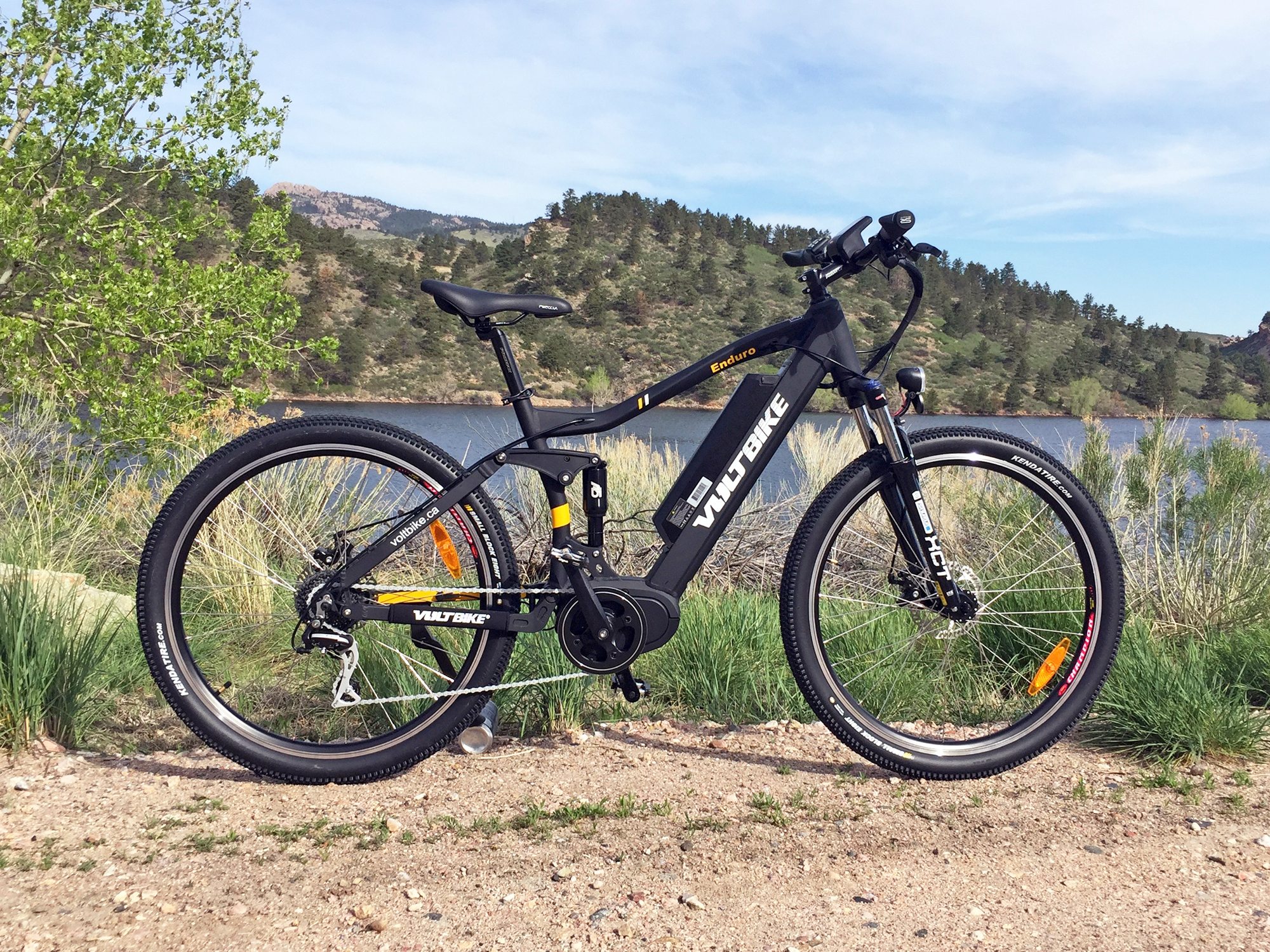

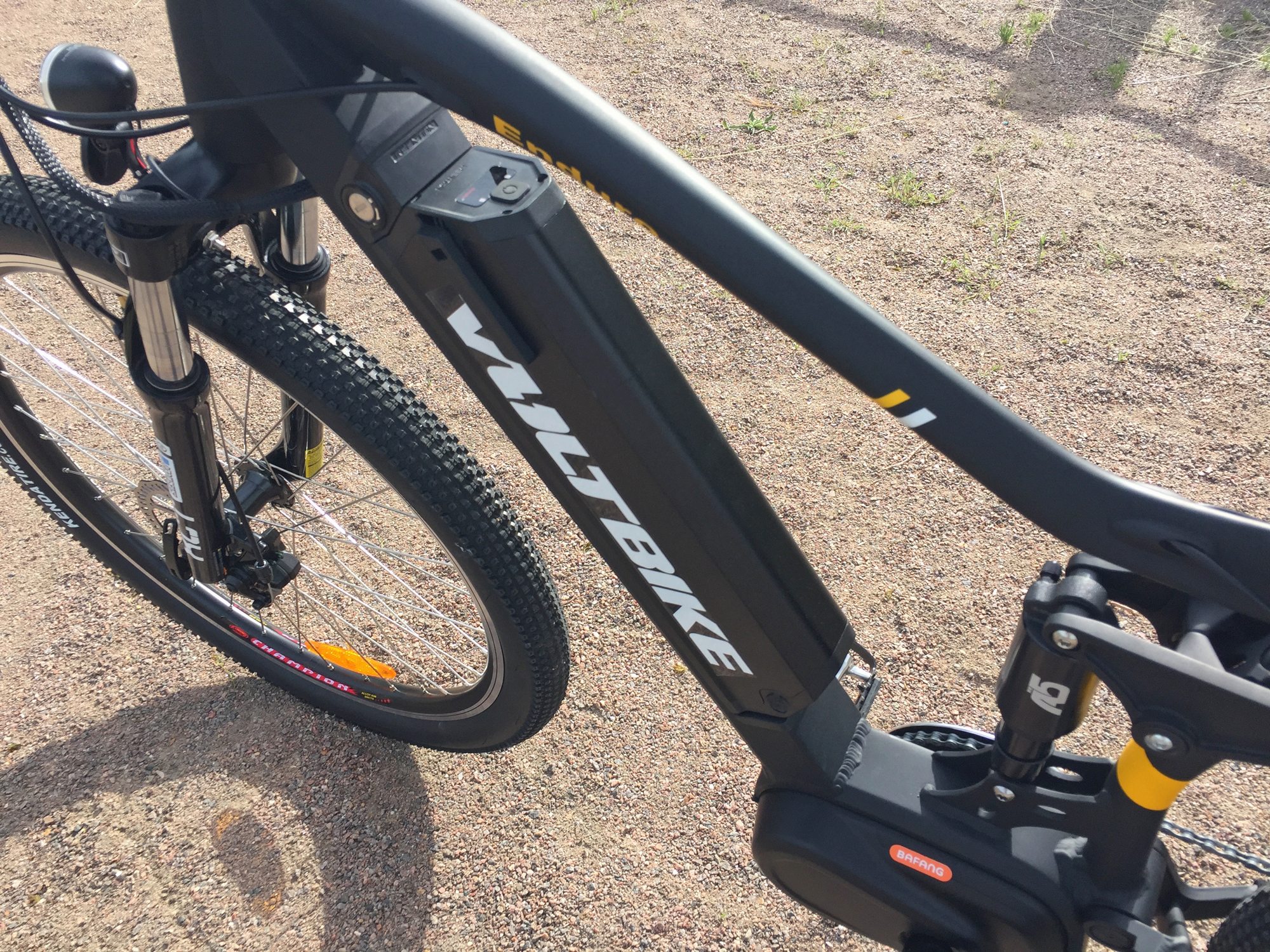
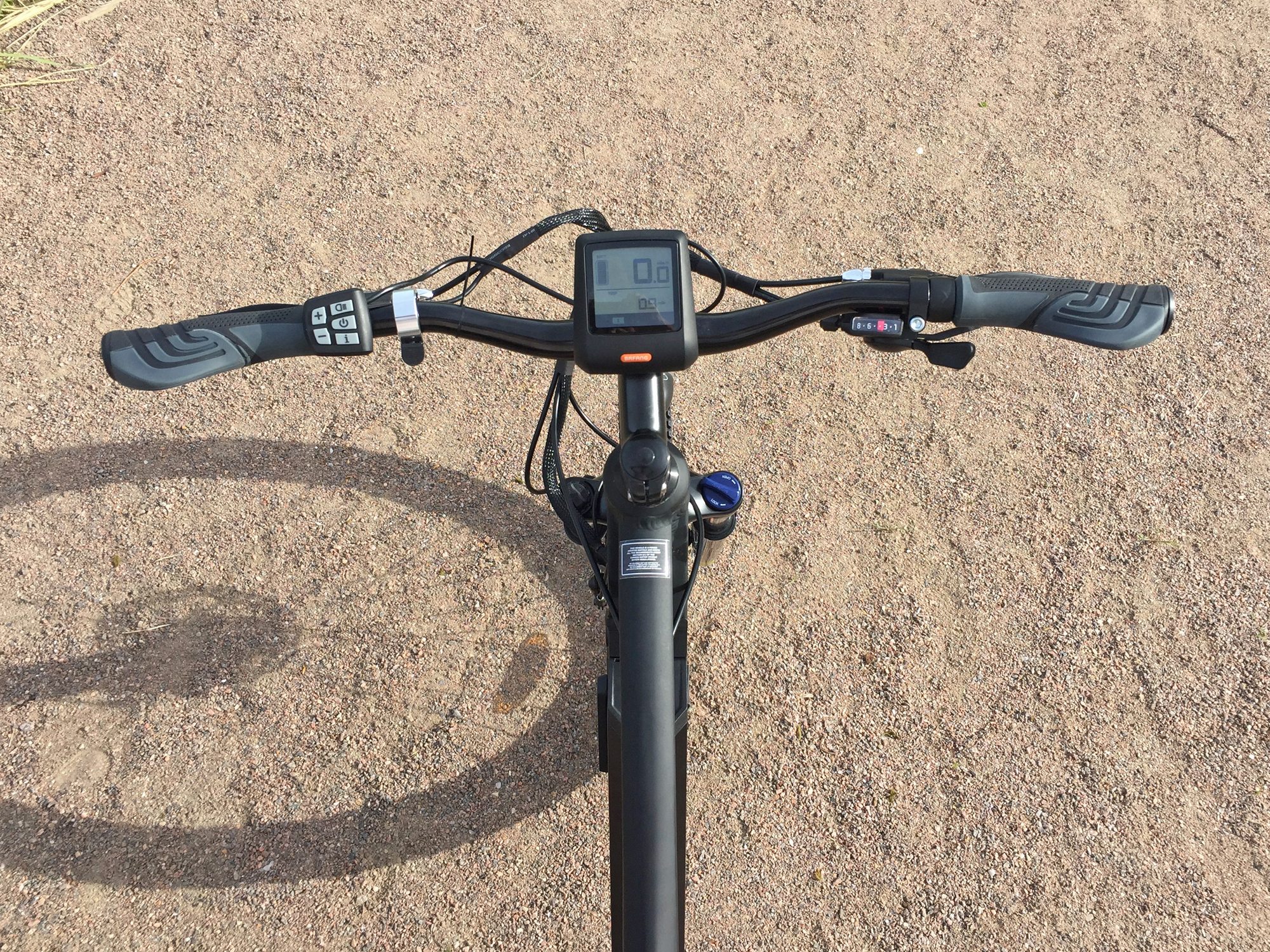



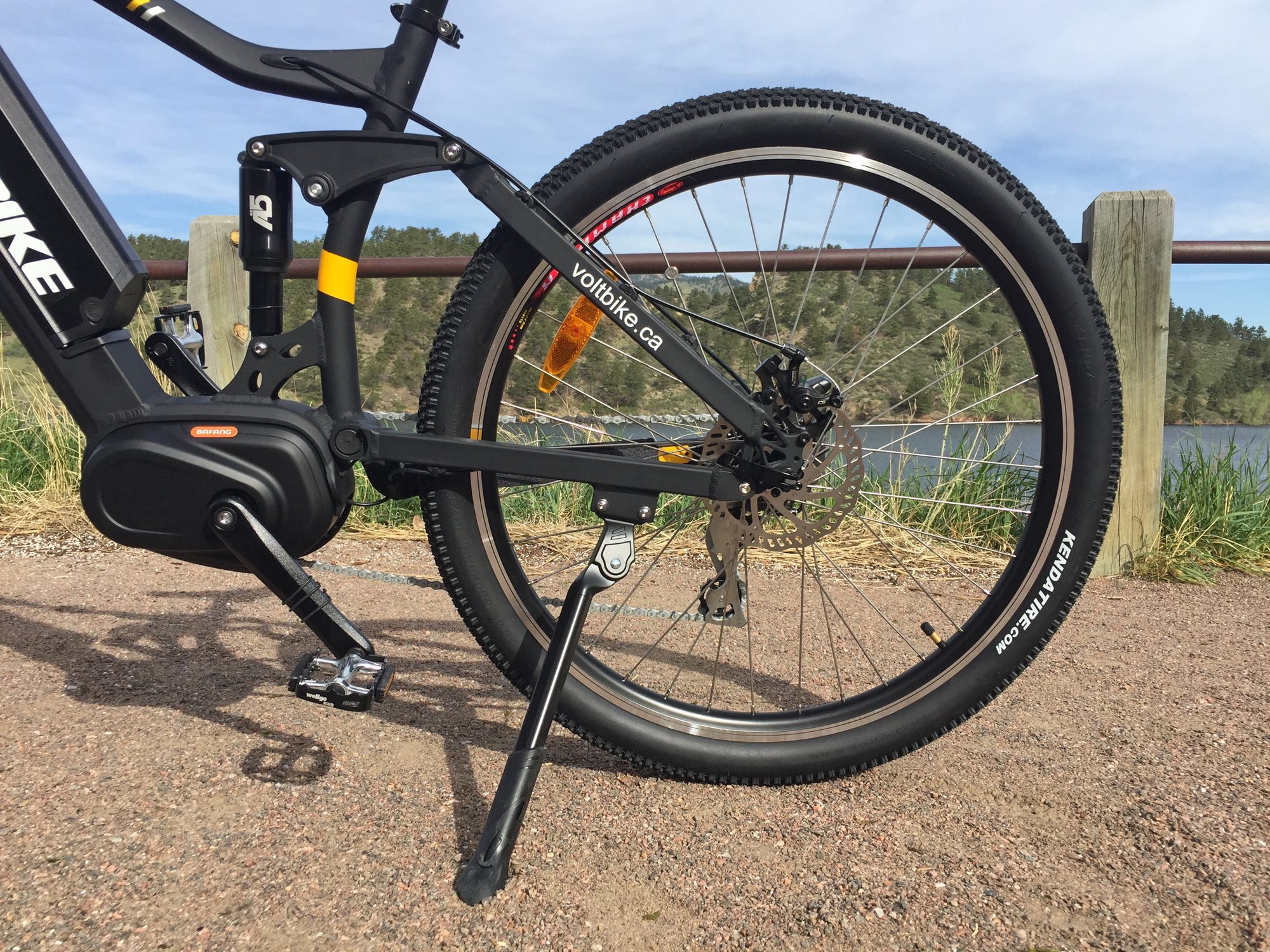
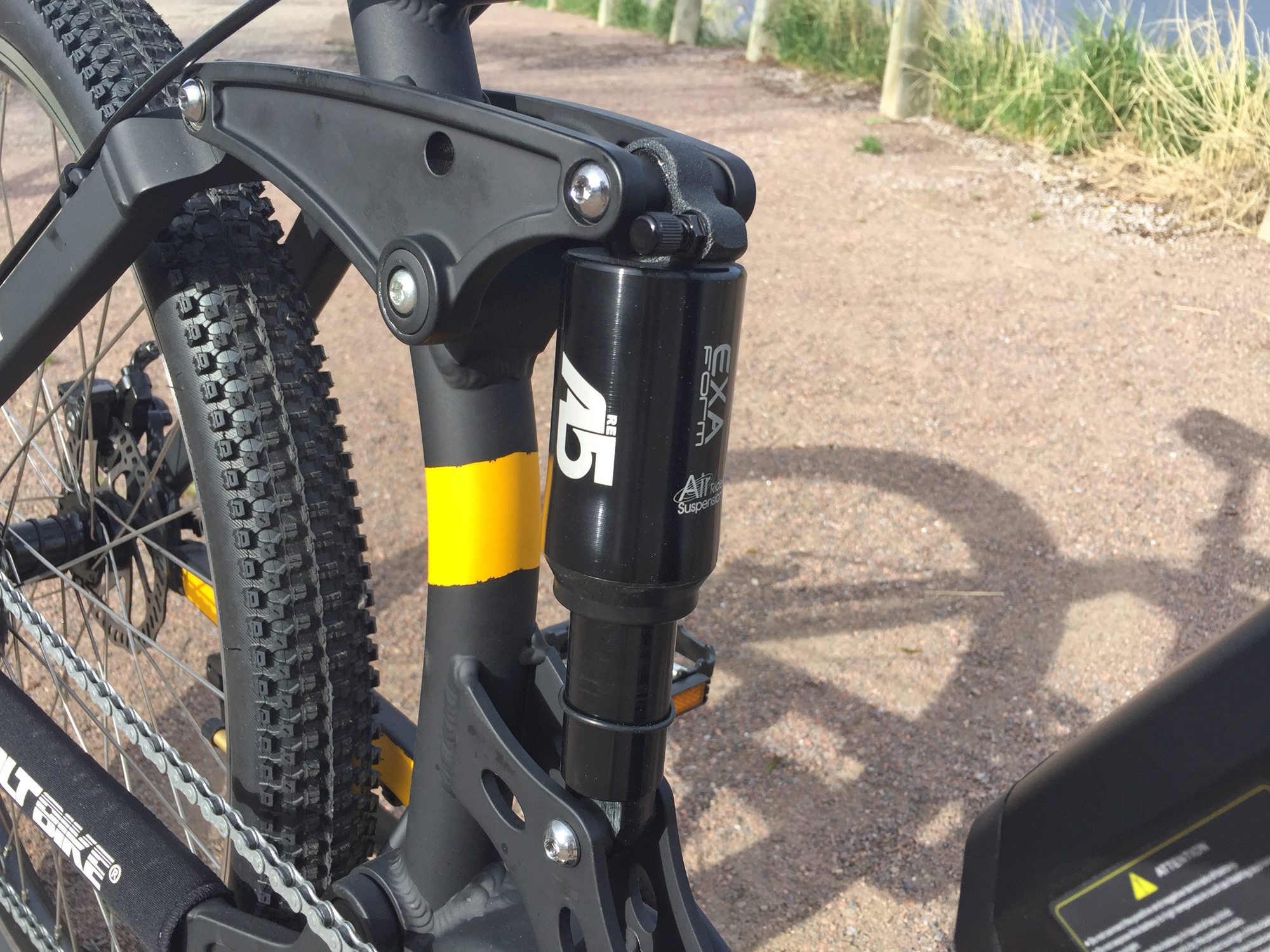
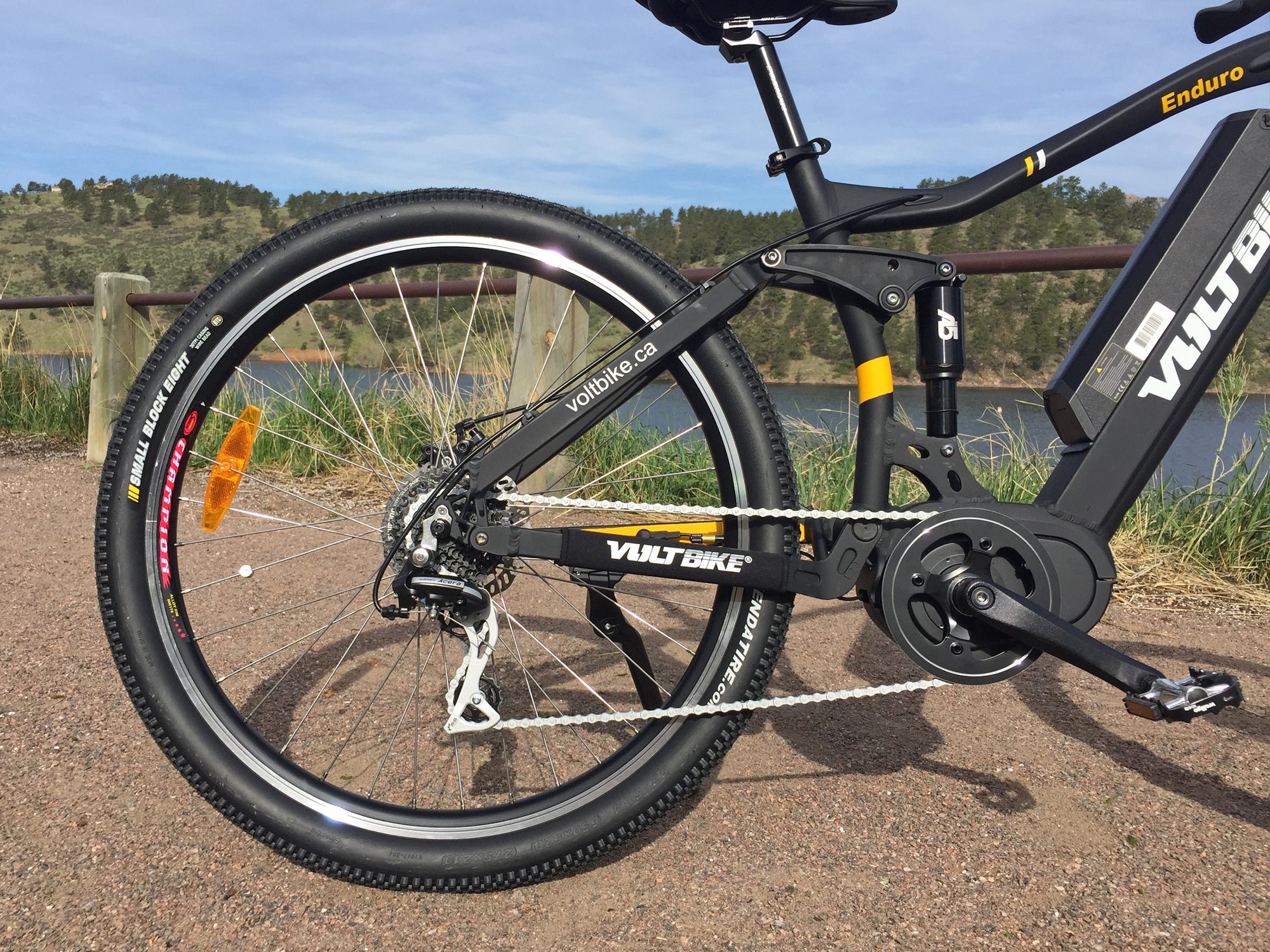
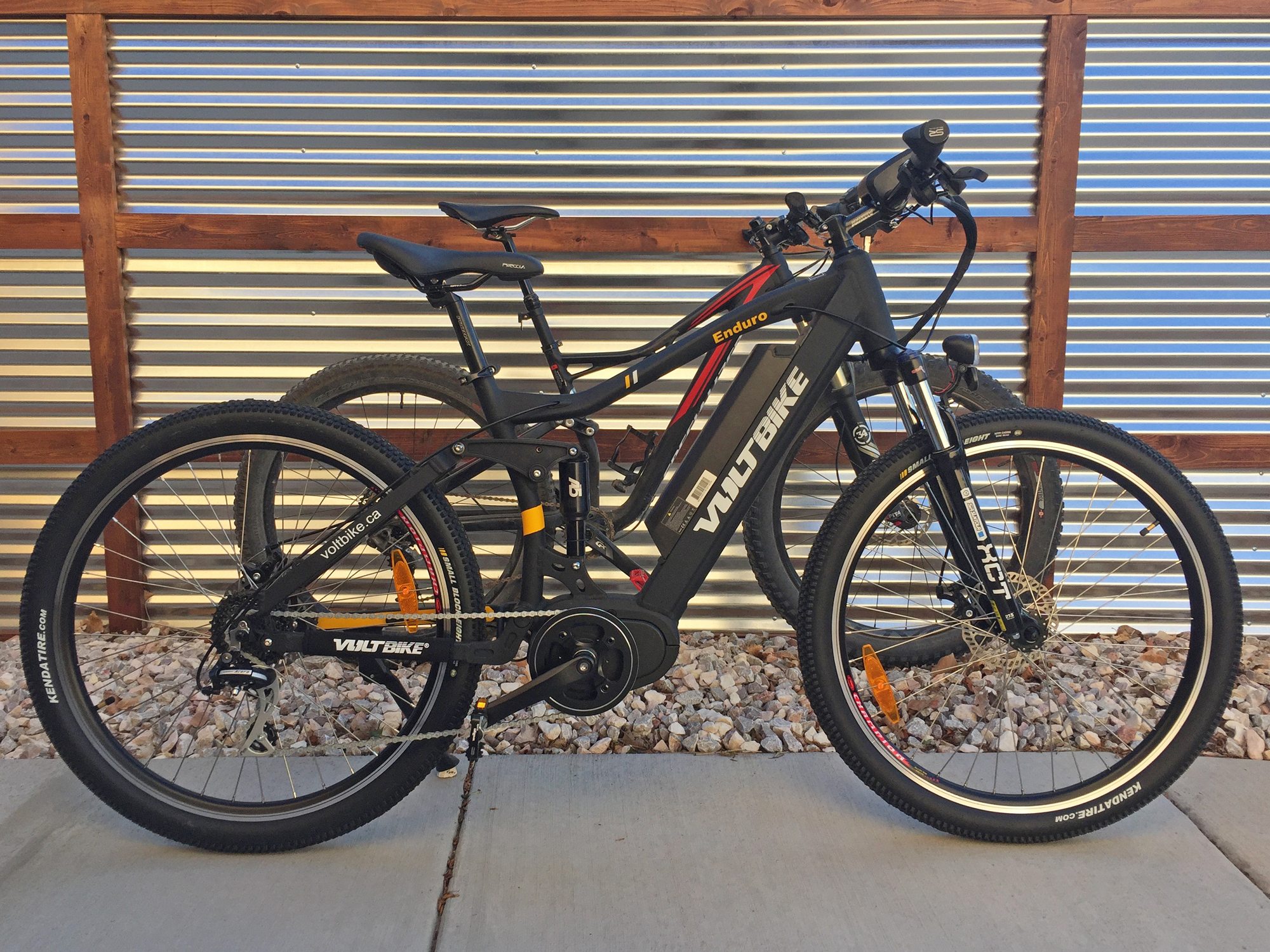
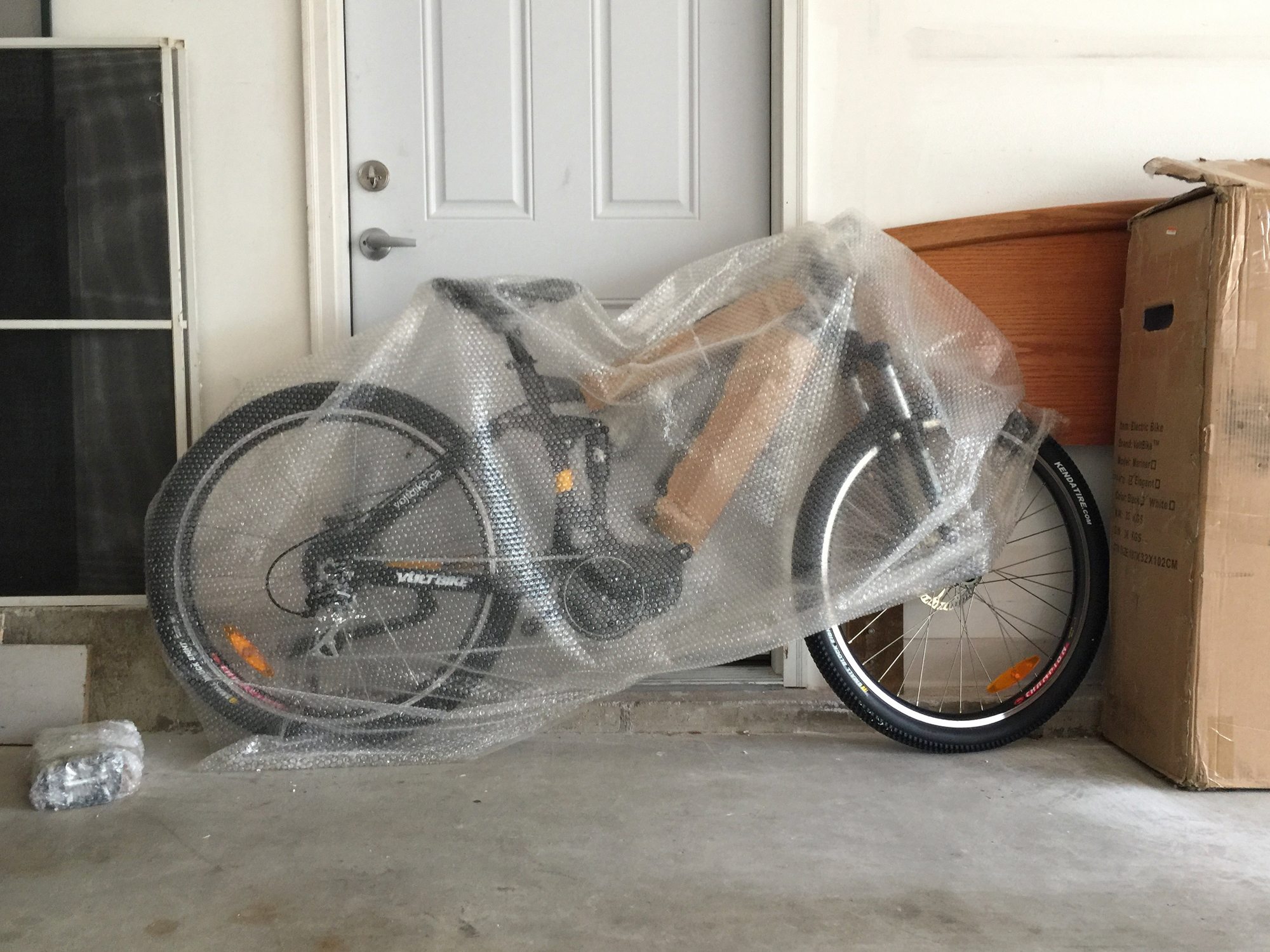
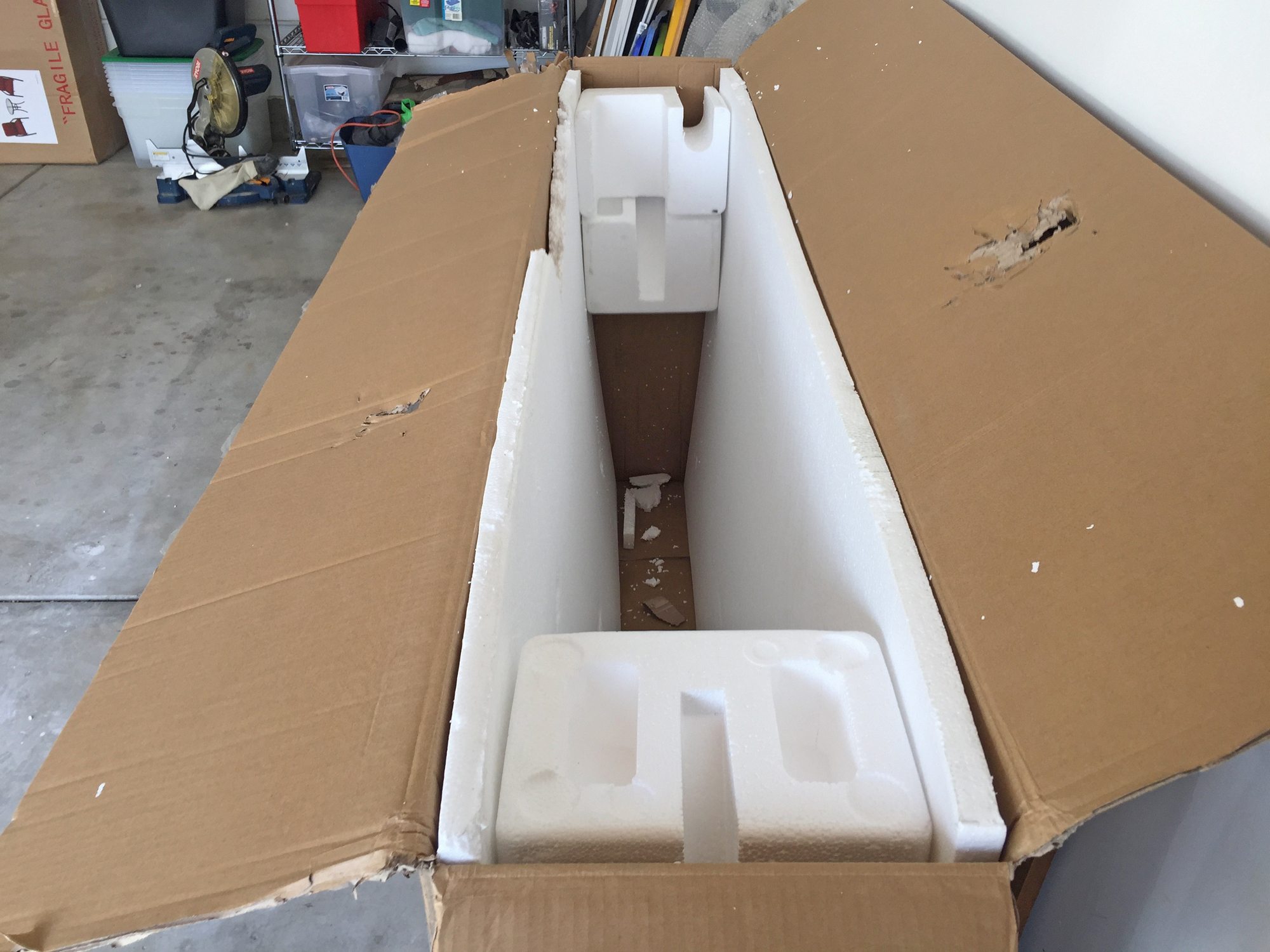


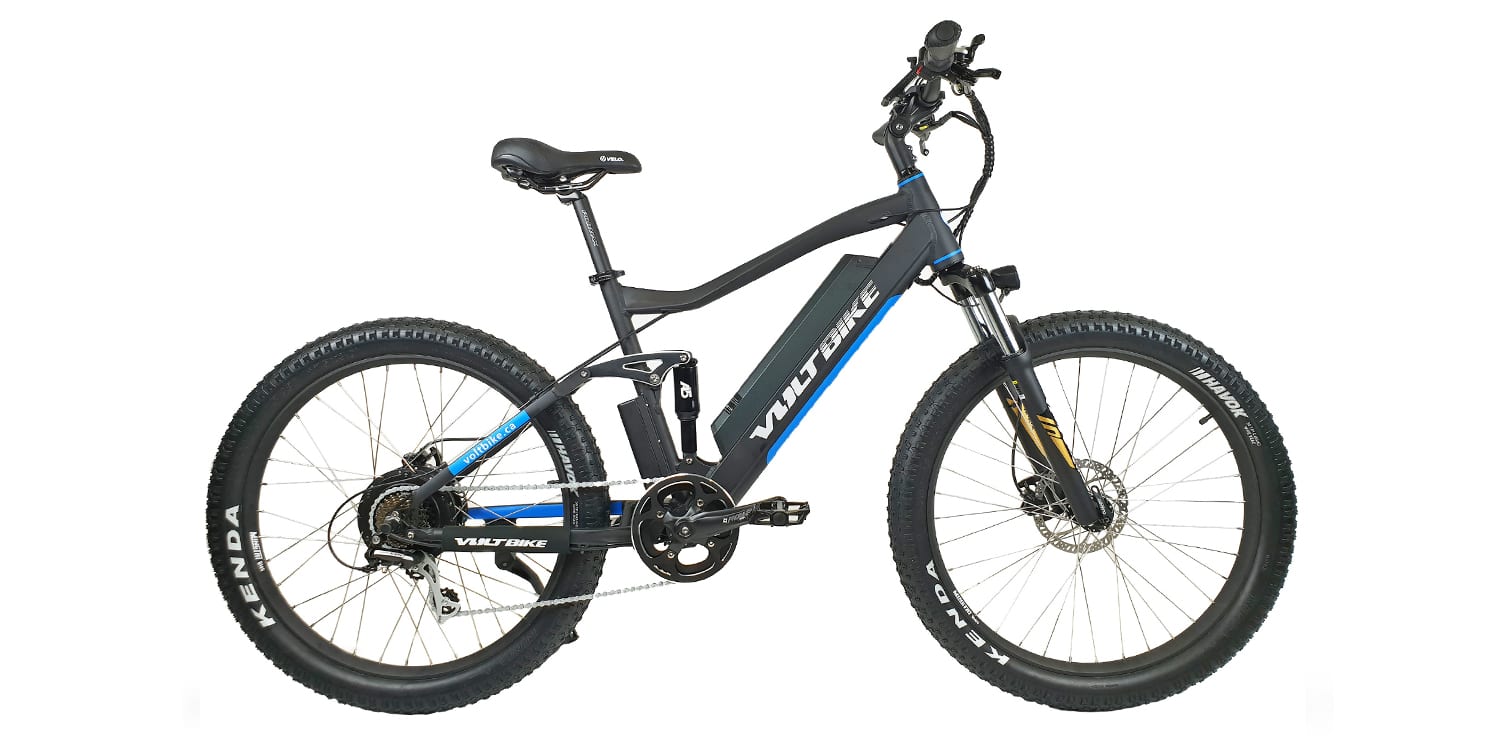
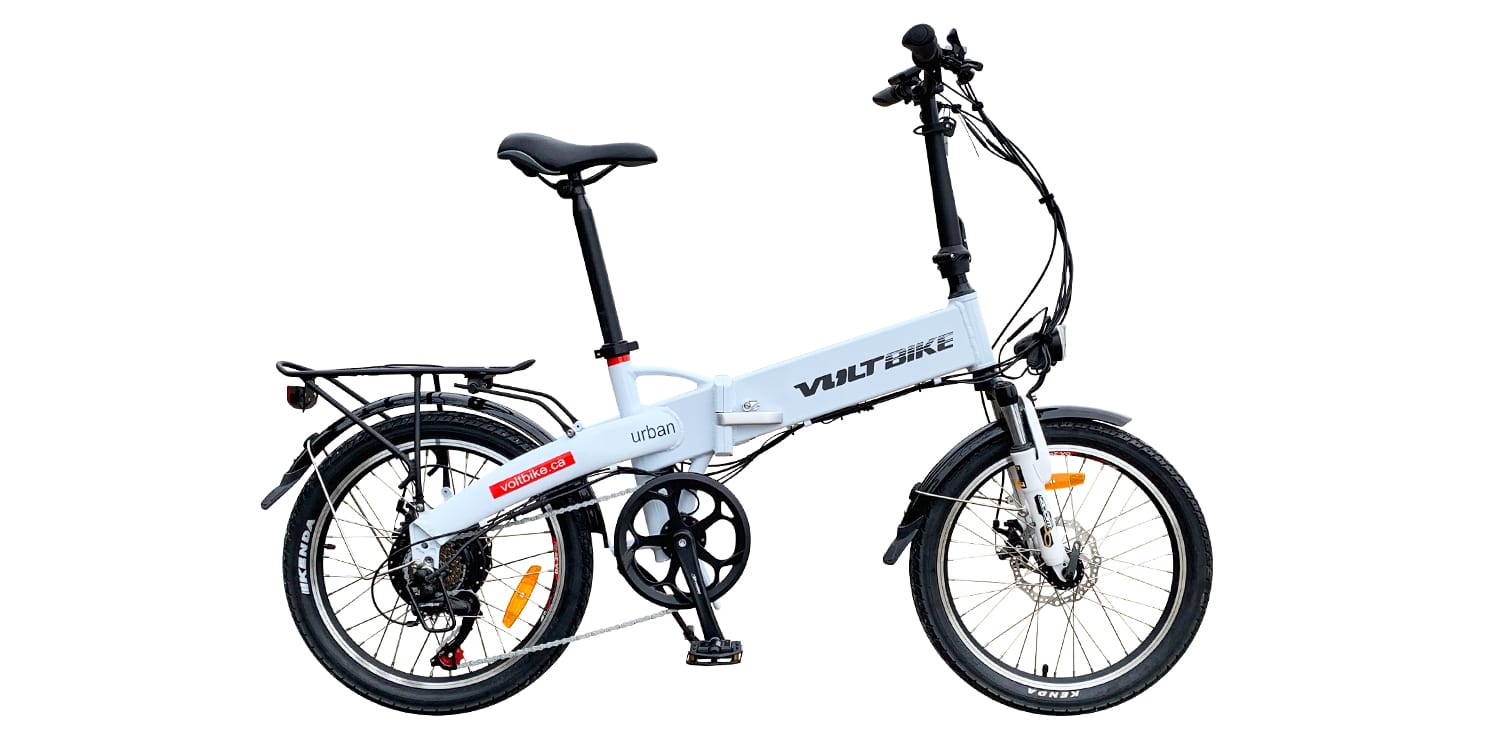
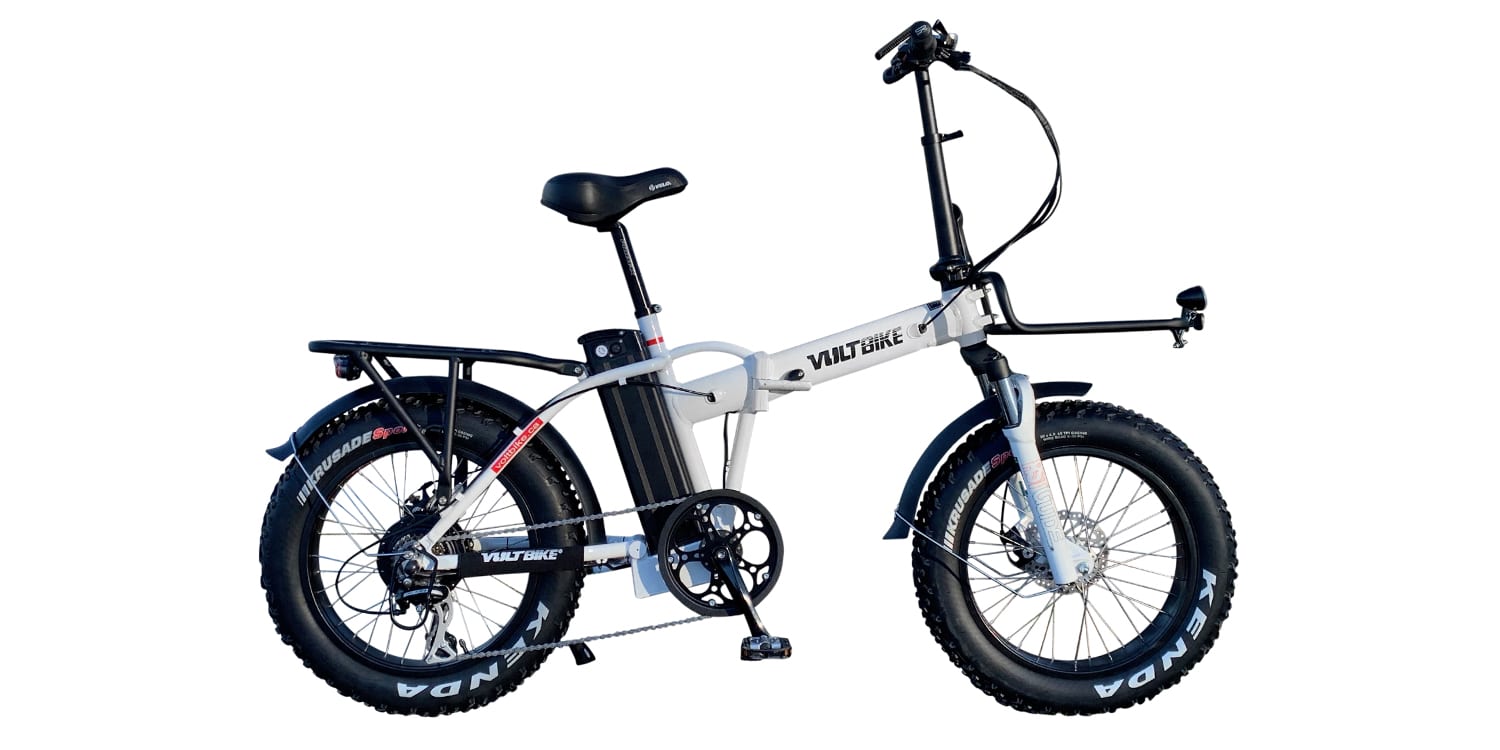
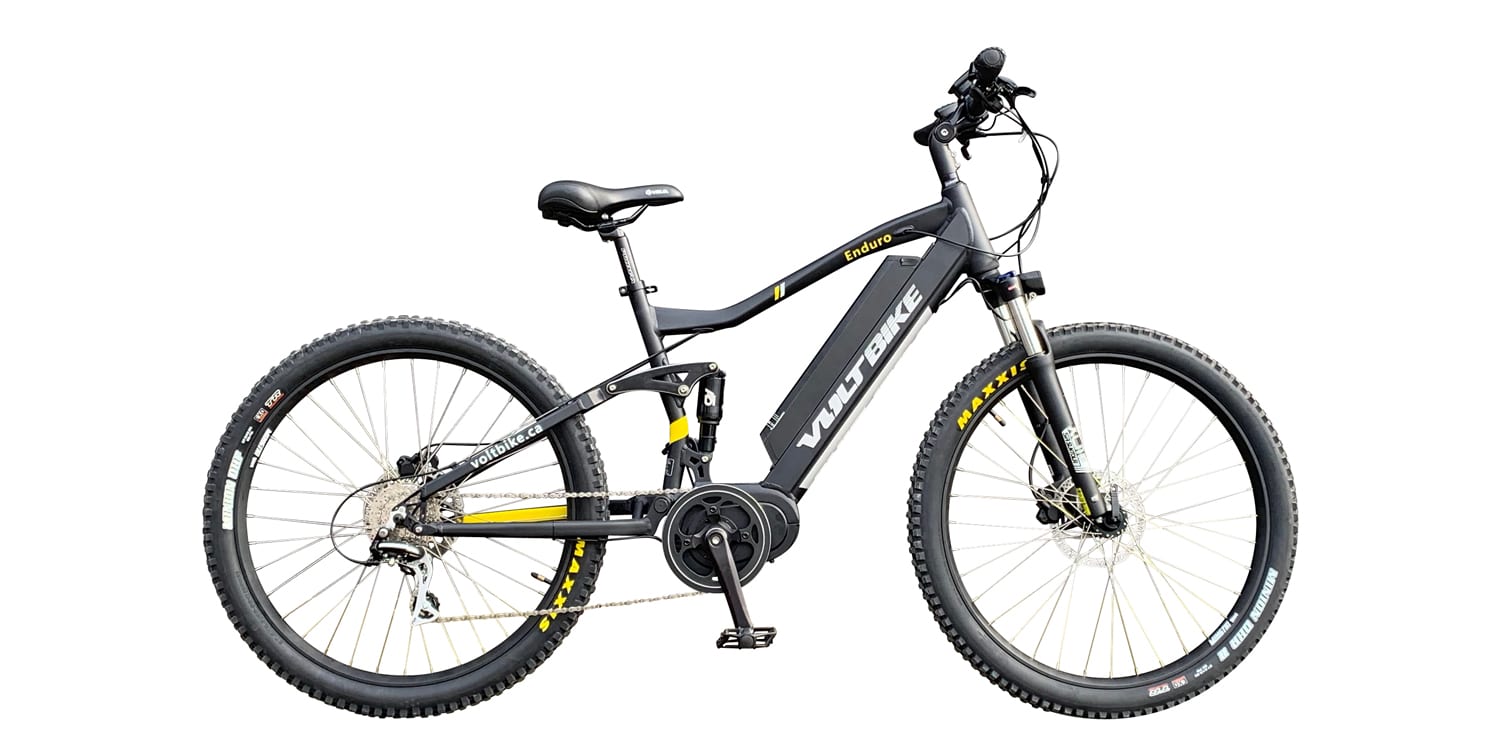
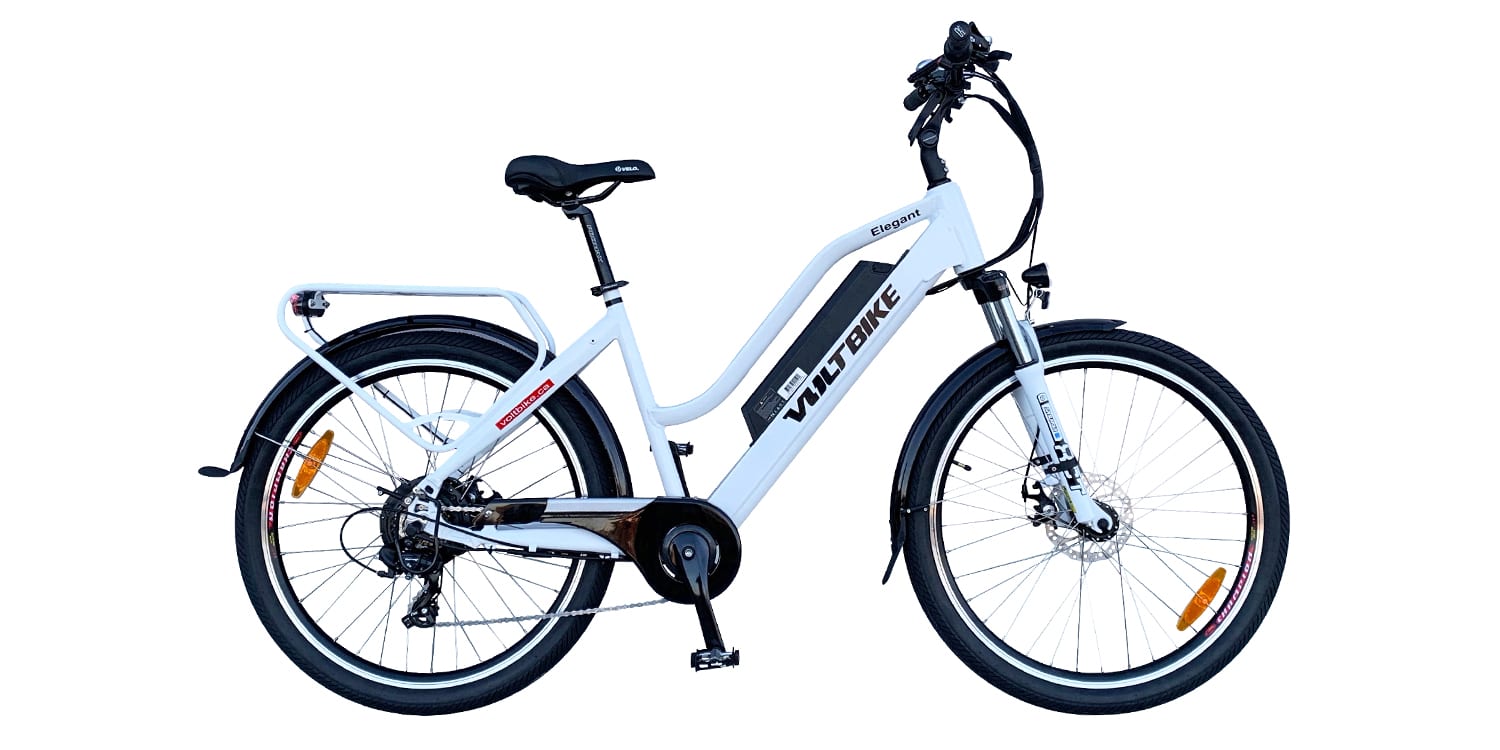
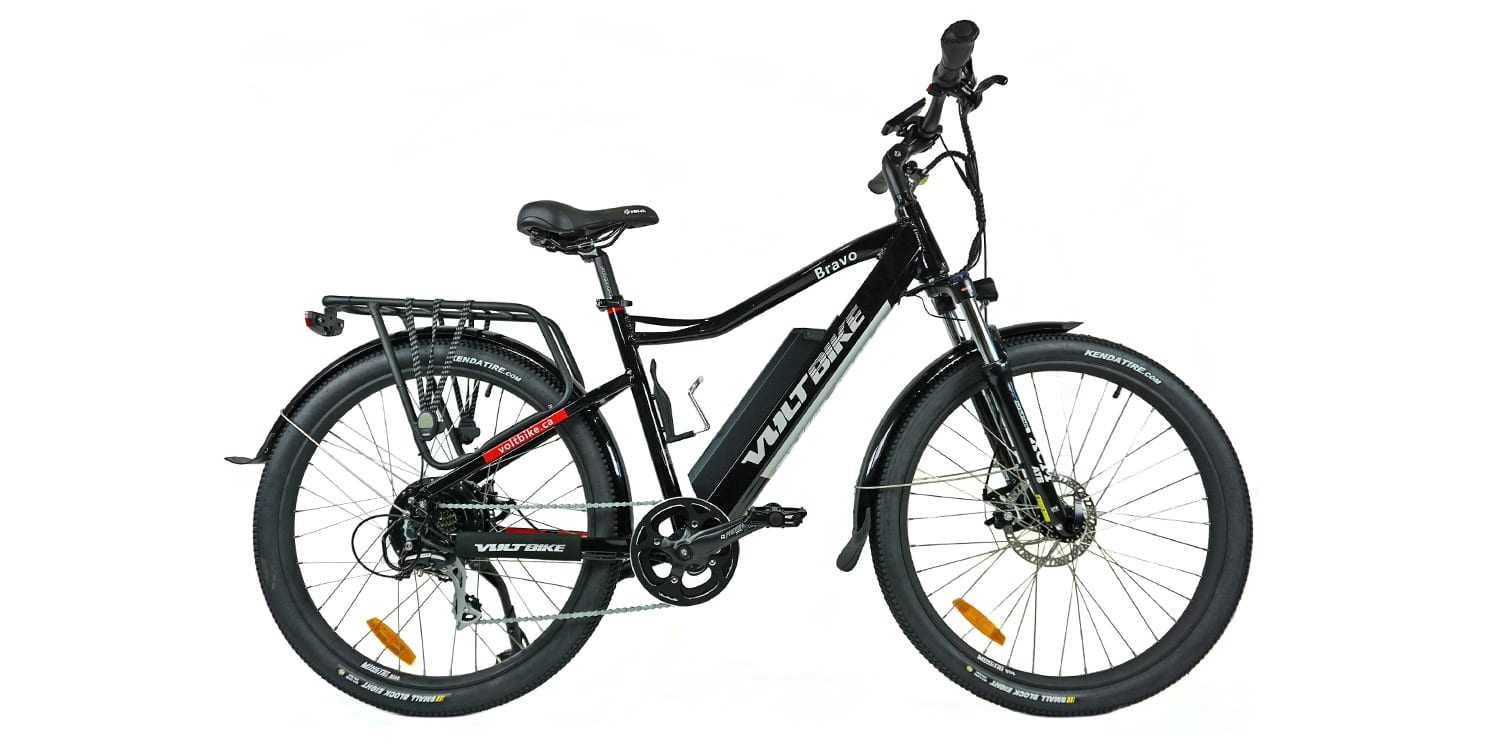
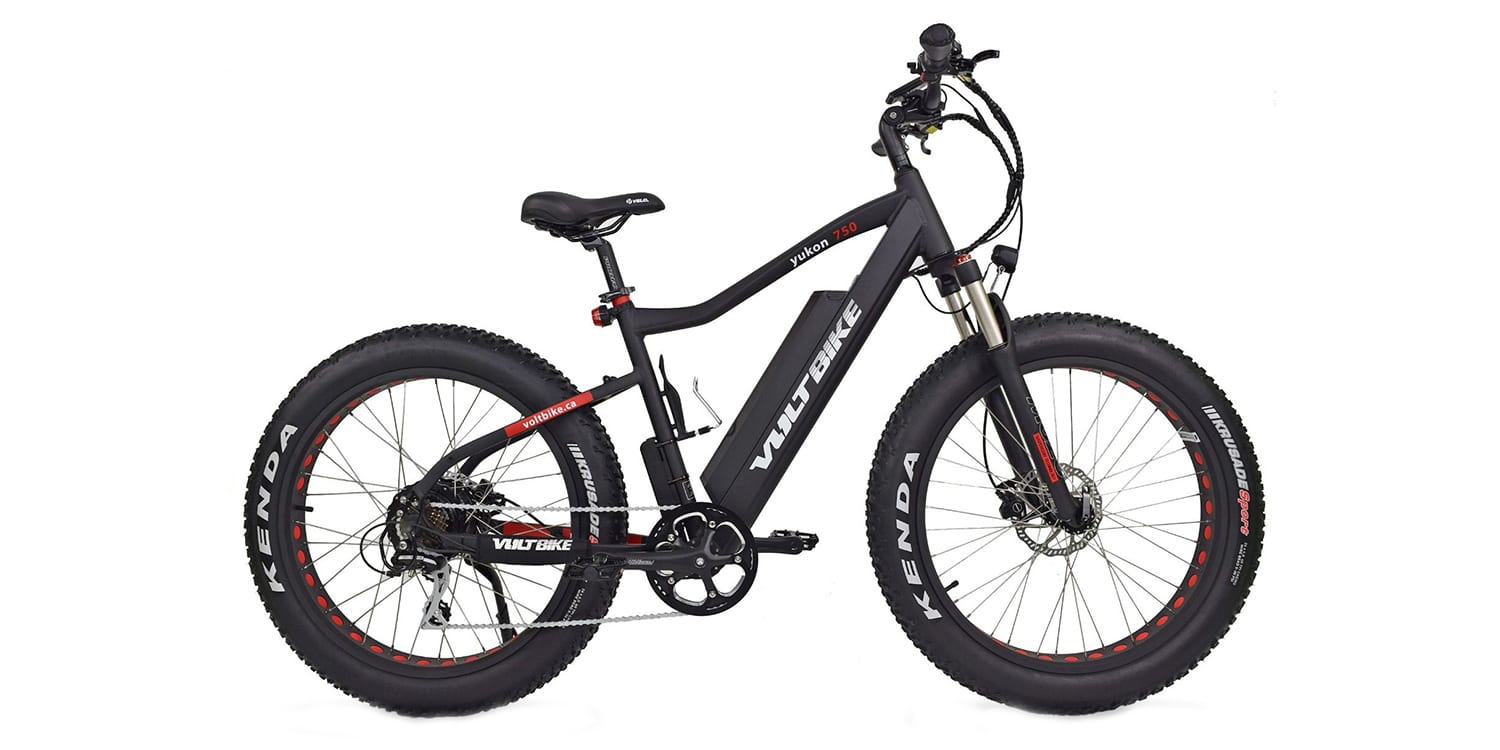
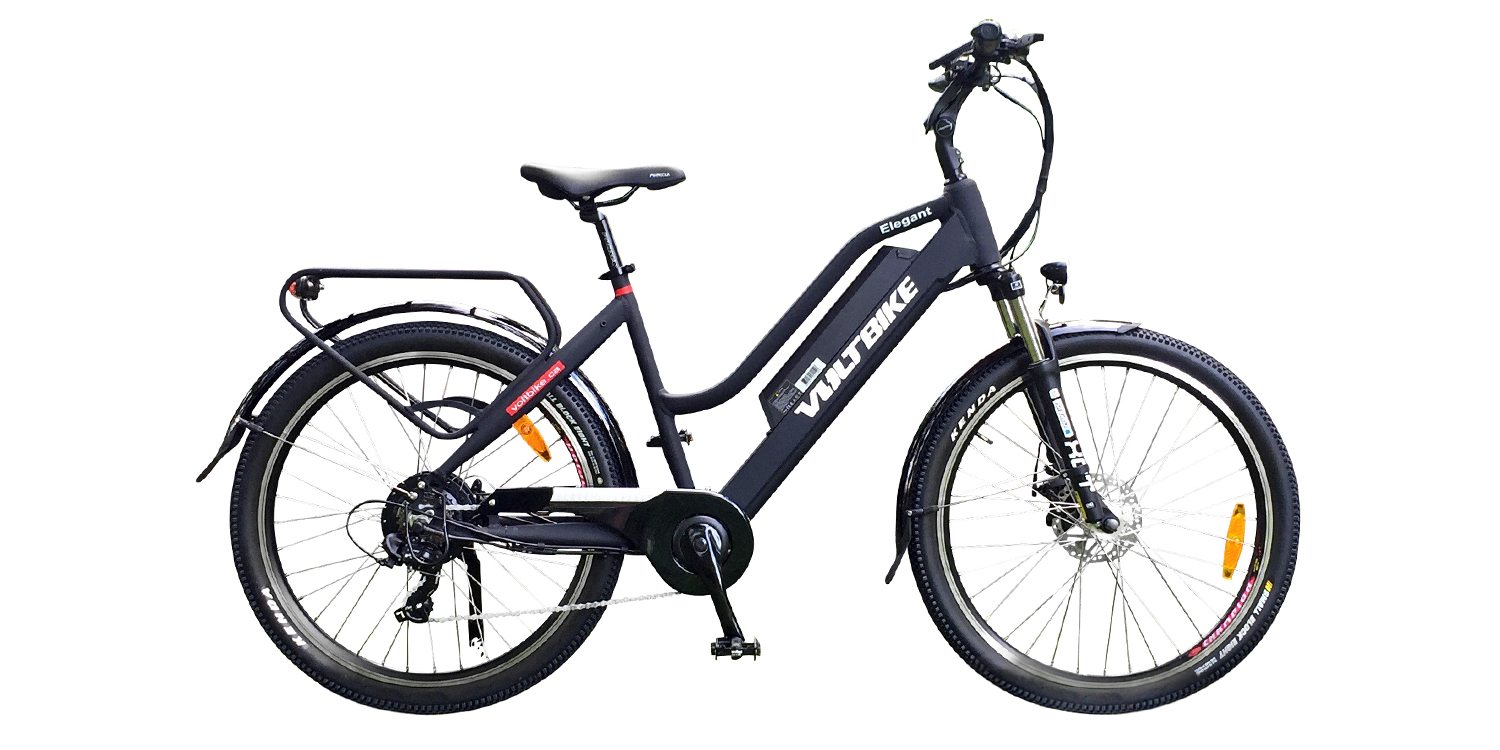
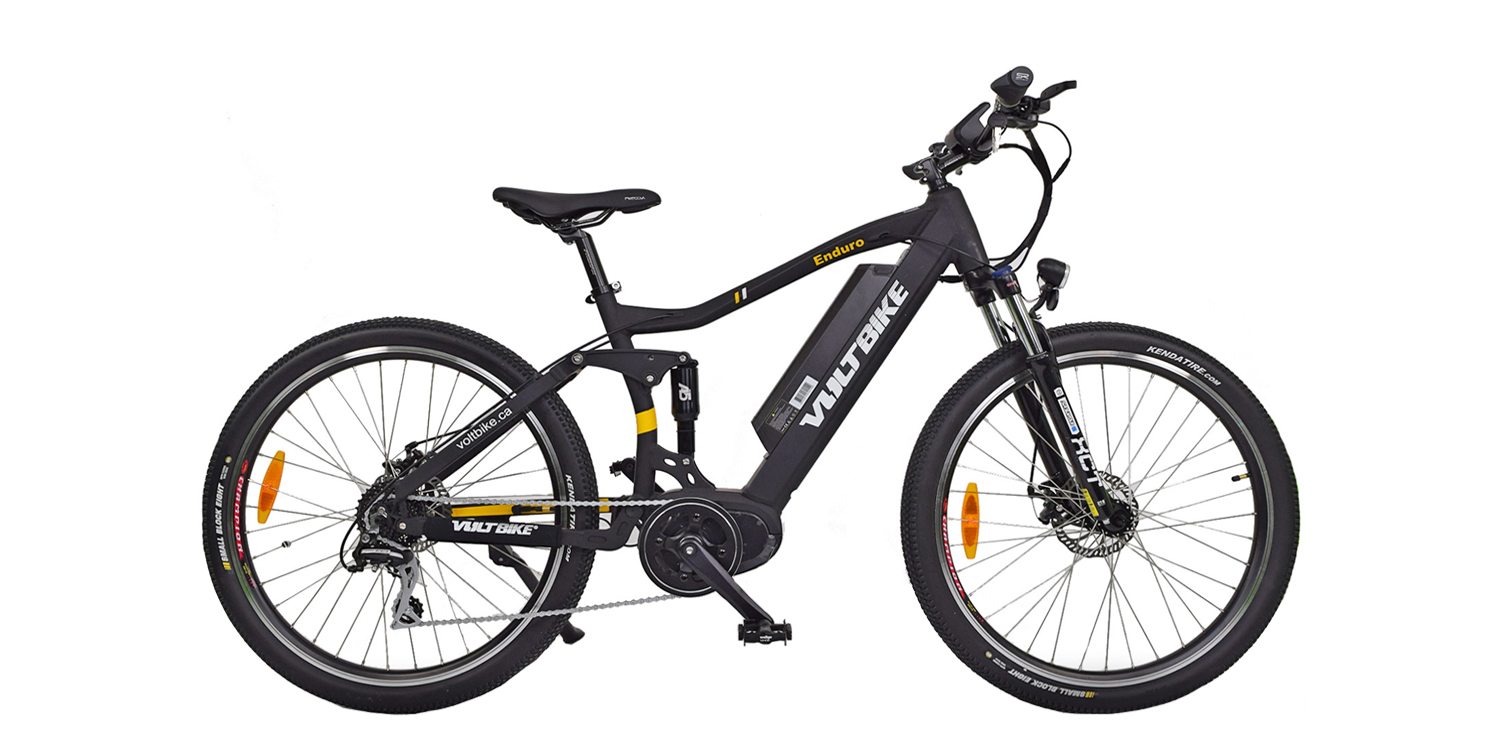
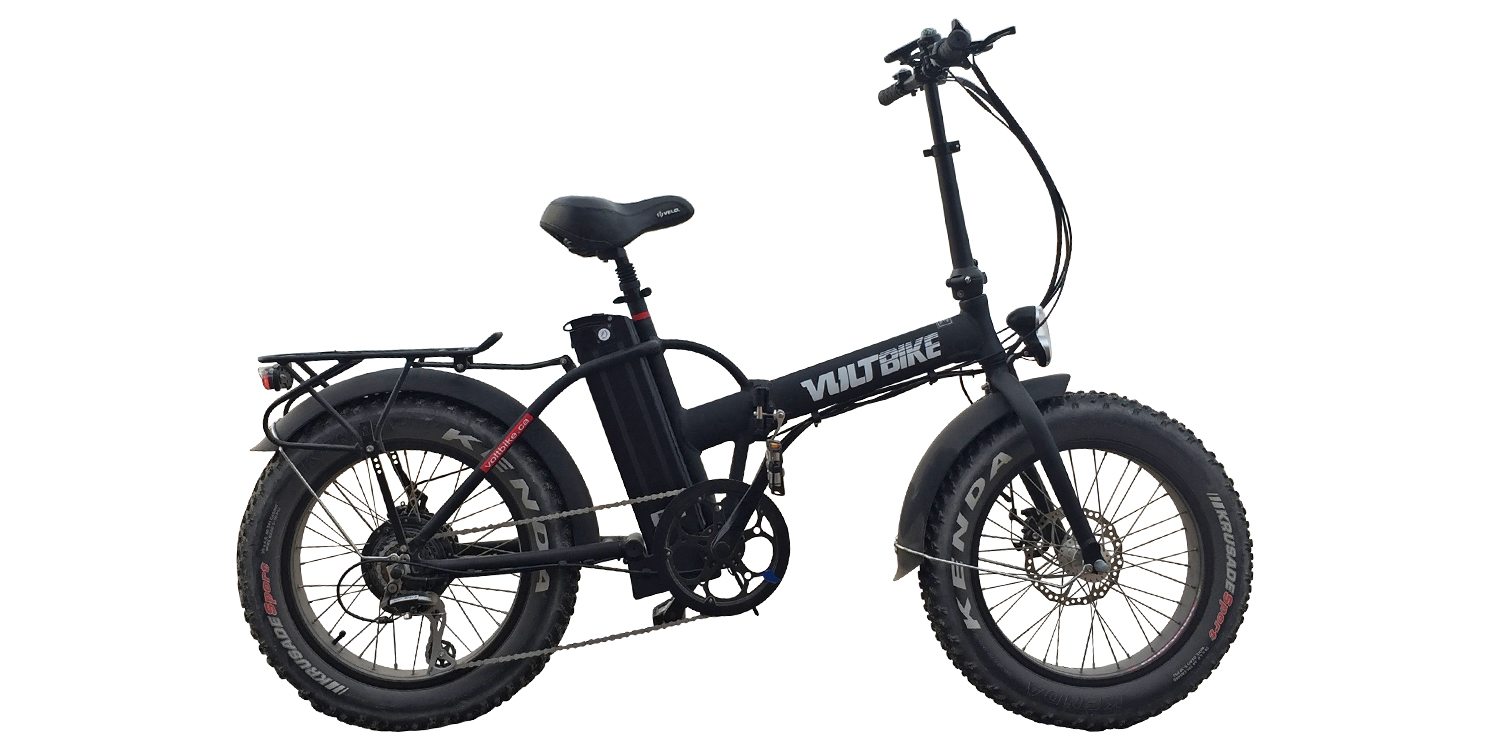
Geffin says
Hey!
I know they are completely different beasts, but would you say the Voltbike Yukon had better build quality than the Voltbike Enduro? Your review of that one was a bit more favorable. I’d like to get one of them this year as it’s within my price range.
Thanks
Court Rye says
Hi Geffin, I’d say they are very similar. I just didn’t go as in depth with the Yukon… had less time and wasn’t as knowledgeable about mountain bike components until recently. Both models offer good value and should hold up if you take care, perhaps the biggest letdown on the Enduro for me was the seat post length and that’s a ~$10 fix :)
scott says
Is this only a pedalac model or does it allow the ability to just use throttle only and no pedalling ?
Court Rye says
Hi Scott, I asked the founder of VoltBike this same question and he explained that the mid-motor they chose isn’t setup for throttles and they couldn’t add it. That may be a bummer for some people but you could still get their hub motor hardtail Yukon 750 which does have a throttle if you want :)
Fredrick Edelkamp says
Court, Love the HUD (Heads Up Display) on the video review! First time I’ve seen it on your videos (and I watched a lot of them) how did you do it?
Court Rye says
Hi Frederick! I use a Garmin Edge 1000 device and then export the data file to overlay on video using the Garmin VIRB Edit software… then I take that overlayed footage and import it into iMovie before doing the rest of my normal video editing :D
Eric Larson says
Hi Court,
Thanks for the fantastic reviews and video’s, what a wealth of information! I am trying to decide between the RAD City E-Bike and the Volt Enduro. I will be using the bike to ride trails and street’s in Seattle. Both companies are a stones throw away so I am torn down the middle on what to go with. What are the pro’s and Con’s to having a throttle? Thanks, -E
Court Rye says
Hi Eric! I’d go with the Enduro myself because I love suspension and have a sensitive back and neck… I don’t miss the throttle that much because I like pedaling and have found that the Bafang Max Drive is very fluid and responsive. It’s one of my favorite ebike systems right now actually. Rad Power Bikes is awesome and the City model is great but unless you need the rack for carrying cargo, the Enduro is just more fun and comfortable :) but in Seattle you might get more wet without fenders :P
B Henry says
Cort,
In the end, did you find the brakes adequate? or do you recommend changing them?
Thanks!
Court Rye says
Hi Henry! I was alright with the brakes for urban and light trail riding but much prefer hydraulic… and the expense of converting would make me consider upgrading to a better e-mountain bike all together. I like the Enduro, but they really had to make some trade-offs to get it to such a low price.
Christopher Cramer says
The two bikes I have narrowed down to are the Enduro and the surface 604 Rook. At this time I can get either for the same price and I’m comparing the two in terms of performance in the city, full suspension bikes are usually heavier than hard tails but according to the specs both these bikes are almost the same total weight. Adding the back suspension does that really decreases the efficiency in acceleration even if you lock it? I have done lots of research on each on the pros and cons and each are almost equally rated. From what you have written about how full suspension can pay off in urban riding, as well as the adjustable top speed, and the price it is at right now I keep holding on to the Enduro, but the facts about efficiency between hard tails and fs bikes mainly in the city over gravel, snow, pavement, and light trails, makes me hesitant to go for the Enduro over the Rook.
Court Rye says
Hi Christopher! Great thoughts here, I’ll try to help. I believe that the reason these two ebikes weigh about the same is that yes, the rear swing arm and suspension element add weight to the Enduro, but the Surface 604 Rook has fenders, a rear rack, and lights. The Enduro uses a very basic rear suspension that does not provide much adjustability or lockout and there will be a minor loss of efficiency through bobbing because of this, and the knobby tires. I do strive for comfort when riding electric bikes because I tend to go further and at higher average speeds… but I love having a rack, fenders, and lights too. These accessories can be difficult to add onto many mountain bikes (especially full suspension) and that can mean you have to wear a backpack. For me, the decision between these two bikes would come down to how you plan to use them. If you have cargo and want to stay dry and visible at night, maybe the Rook is best, you can add a cheap seat post suspension like this to smooth out the ride and still maintain efficiency. Otherwise, maybe the Enduro is a better choice if you plan to go off-road a bit more and like the mountain style with grippier tires.
Christopher says
I did some research on short travel xc/trail bikes, and I read that full suspension bikes may still be just as efficient as a hard tail when riding xc. Since the enduro only has 80 mm of travel on the rear suspension, I am thinking it would perform well as a xc bike rather than an enduro. I don’t plan on riding any highly technical trails yet, but I also don’t see myself riding the bike only as a means of transportation. I am excited to begin mountain biking as a beginner, exploring some creative routes/trails around the city rather than just staying on the road. The rook is classified more as a cruiser, how well would it really handle some off road riding compared to the enduro handling on road riding?
Court Rye says
Hi Christopher! I love your approach, this ebike would be great for starting out and is well suited to light trail and cross country… it’s not a true enduro or all mountain model AT ALL even though that’s what they chose as the name. The rear suspension is extremely cheap and limited. It’s barely worth the added weight and frame complexity in terms of what is offered. Perhaps it could be replaced, but for that sort of money and effort I’d just upgrade to a cheap Haibike or used full suspension model with Bosch, Yamaha, Shimano, Brose or Bafang. Check out Lectric Cycles (they do conversions) for some affordable full suspension models with much tougher hardware. I personally love the Rook and Colt from Surface 604 because they have racks, fenders, lights etc. and they would be fine on hard packed trails if you are just careful… maybe add a seat post suspension for more comfort. You could always swap knobbier tires onto one of those bikes too if you wanted better traction, the fenders would probably always rattle a bit but you could take them off too. I hope this helps as you narrow down :)
Christopher says
Thanks for the advice, I decided to go with a hard tail bike. I upgraded to the haibike sduro hardnine 4, because I found it on sale for the same total price as I would get the enduro. Could I add fenders and a rack to the hardnine 4 if I threaded some holes in the back?
Court Rye says
Great choice Christopher! That’s a solid ebike for the money in my opinion… Mikey reviewed it a while back and I was impressed with the performance and aesthetics. Unfortunately, it doesn’t come with rack bosses because Haibike uses a lower seat stay design and the 29″ tires would require extra-long rack supports and connectors at the front. I would definitely urge you to NOT try to create any holes in the frame because that could damage the structural integrity and cause a failure where you could crash and get injured. Instead, try using a clamp-on beam rack such as this one from Topeak, and look for the A-Type which clamps and then raises up to provide clearance for tall wheels (so you can keep your seat low but still have a higher rack). It’s not going to be as sturdy, able to support as much weight, or as fixed in position (many times beam racks can get bumped side to side) but if you’re riding on light trails or around town, it could be just fine for taking gear off of a backpack and putting it onto the bike. My Uncle used this exact sort of setup on his full suspension Haibike which we talk about in this video, but we didn’t have the rack on the bike. I hope this helps you out! Have fun out there and ride safe :D
dStapleton says
I’m 6 foot 4 inches (with long legs), would this volt bike Enduro be too small for me?
Court says
Hi Dan, I do think this ebike would feel small for you… but most of the affordably priced models are in the “medium” size, and don’t offer multiple frame size options. You could make it work by adding a longer stem, maybe getting a longer seat post, but as-is, the bike will probably feel small for you.